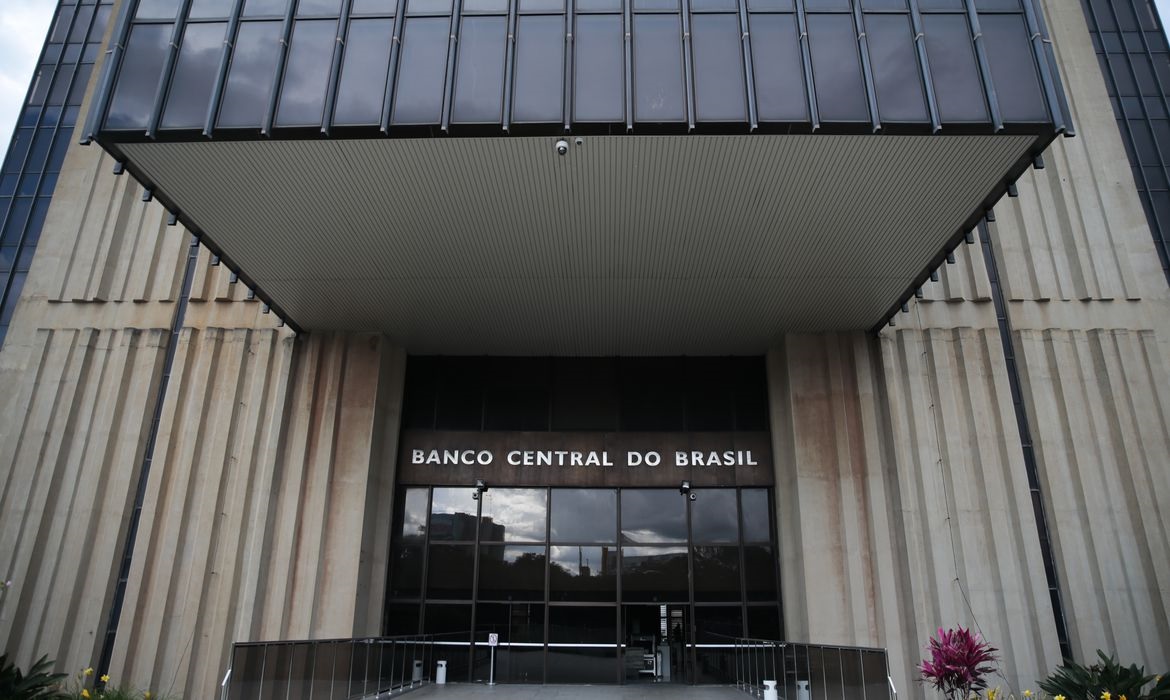The Brazilian Central Bank (BC) raised the projection for economic growth this year.
The estimated expansion of the Gross Domestic Product (GDP, the sum of all goods and services produced in the country) went from 1.7% to 2.7%.
The projection is included in the Inflation Report, a quarterly publication of the Central Bank, released on September 29.
“The surprise growth in the second quarter, the initial results of the third quarter, and stimuli not included in the previous Inflation Report – notably the increase in the value of the Brazil Aid benefit and the cooling of inflation, resulting largely from the reduction of taxes on fuel, energy and communication services – are the main factors for the revision,” explained the Central Bank.
The last report was released in June.

In the second quarter, the GDP grew 1.2% compared to the previous quarter, driven by the increase in household consumption, the resumption of personal services, and the progress in cargo and passenger transportation.
It was the indicator’s fourth consecutive positive result after the 0.3% drop in the second quarter of last year.
According to the Central Bank, a new expansion should be recorded in the third quarter of 2022, “but at a lower magnitude than that observed in the last three quarters.
Among the supply components, the forecast for industrial growth was changed from 1.2% to 2.4%, with an improvement in the forecasts for all sectors, except for the extractive industry.
In services, the estimate was revised from 2.1% to 3.4%, with an increase in growth estimates for all sectors except for government services.
In the opposite direction, the projection for agriculture and cattle-raising was altered from a high of 2.2% to stability, in line with revisions made by the Brazilian Institute of Geography and Statistics (IBGE), which presented a slight reduction in projections for grain production and a strong decline in the forecast for sugar cane.
Similarly, expectations for livestock were reduced, reflecting more recent data for meat, milk, and egg production made available by IBGE.
Concerning the domestic components of demand, there was an increase in the projections for household consumption, from 1.7% to 3.9%, and for the gross formation of fixed capital of companies, from a fall of 2.7% to a drop of 0.4%, and a reduction in the projection for government consumption, from 1.8% to 0.7%.
Exports and imports of goods and services in 2022 should vary, in order, 1.5% and fall by 2.5%, compared to respective projections of 2.5% and 4% in the previous Inflation Report.
For the first time, the Central Bank brought the projection for the GDP in 2023. The estimate is for growth of 1%, “under the influence of the expected global slowdown and the cumulative impacts of domestic monetary policy.
Inflation
Inflation, calculated by the Broad National Consumer Price Index (IPCA), should end 2022 at 5.8%, in the scenario with an interest rate (Selic) of 13.75% per year and an exchange rate starting at R$ 5.20. In the previous report, in June, the projection was 8.8%.
The Central Bank also projects that inflation will be 4.6% in 2023 and 2.8% in 2024 and 2025. In this trajectory, the Selic rate reaches the end of 2023, 2024, and 2025 at 11.25%, 8%, and 7.50%, respectively.
The target for 2022, set by the National Monetary Council (CMN), is 3.5% inflation, with a tolerance interval of 1.5 percentage points up or down.
The lower limit is 2%, and the upper 5%. For 2023 and 2024, the CMN established a target of 3.25% and 3% for the IPCA, respectively, with 1.5 percentage points of tolerance.
In the June report, the Central Bank officially acknowledged that this year’s target would be exceeded but has now reduced this probability.
“In terms of estimated probabilities of inflation exceeding the limits of the tolerance interval, the highlights in the reference scenario are the reduction of the probability of inflation being above the upper limit in 2022, from close to 100% in the previous report to around 93% in this report, and the increase of the probability for 2023, from around 29% to around 46%,” points out the report.
According to the Central Bank, four-quarter accumulated inflation peaked at 11.9% in the second quarter of this year and should drop significantly in the following quarters.
Specifically for the downward revision of 2022, the report highlights, among others, the effect of federal tax reductions on fuel, electricity, and communications.
The increase in the projections for 2023 – from 4% to 4.6% – resulted, precisely, from the hypothesis of the return of taxes on fuel at the beginning of next year, in addition to the exchange rate depreciation and stronger than expected economic activity indicators.
With the recent drops in inflation, the Central Bank ended the cycle of Selic hikes and maintained the basic rate at 13.75% in the last Monetary Policy Committee (Copom) meeting last week.
It was the first hike pause after 12 consecutive highs amid rising food, energy, and fuel prices.
However, the institution considers that consumer inflation remains high and signaled that it “will not hesitate” to resume the hike if the disinflation process does not go as expected.
It is the main instrument used by the Central Bank to reach the inflation target.
The increase in the Selic rate, which serves as a reference for other interest rates in the country, helps control inflation because the rate is reflected in prices since higher interest rates make credit more expensive and stimulate savings, avoiding heated demand.
With information from Agência Brasil

